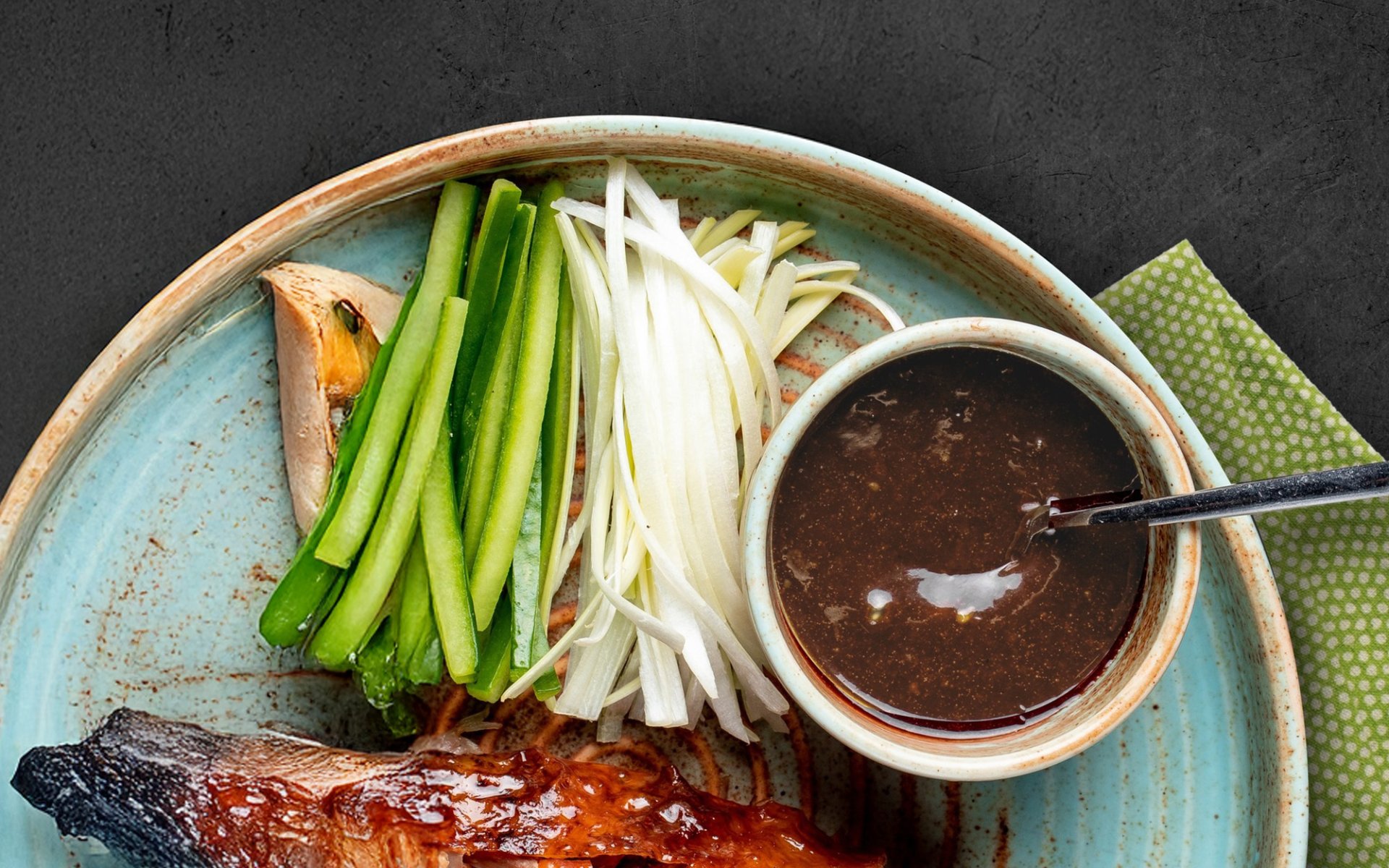Hoisin Sauce

Dating back to the Han Dynasty in Guangdong Province, southern China, there was a sauce popular among Chinese people called Haixianjiang (pronounced "hai-xian-jiang"). This name translates to seafood sauce, and it was made from black beans and wheat, fermented with various dried seafood like oysters and shrimp, along with soybeans, garlic, vinegar, and other seasonings. This sauce is considered the origin of today's Hoisin sauce and was traditionally consumed with seafood and other snacks.
An article in Guangzhou's Southern Metropolis Daily stated that Haixianjiang sauce was mentioned in early literature from the Lingnan region, which now covers Guangdong, Guangxi, and Hainan provinces. At that time, Haixianjiang sauce was considered a luxury item highly popular among the population in southern China.
Evolution from Seafood Sauce to Hoisin Sauce
Over time, the recipe for Haixianjiang sauce evolved, with other ingredients added to enhance its flavor, and seafood components were removed from the recipe as seafood became more expensive. After these recipe changes, the sauce's name was changed to Hoisin in Cantonese. Eventually, the sauce was introduced to northern China and spread to other parts of the world.
Today, recipes for Hoisin sauce vary according to the preferences of individual families or commercial producers. Some recipes are said to contain as many as 12 ingredients. However, the basic ingredients remain the same, including fermented bean paste, vinegar, sugar, sesame oil, chili, garlic, flour, and other spices. In addition to these, some modern recipes also use plum as an ingredient to achieve a more complex, sweet-and-sour flavor.
Global Popularity and Characteristics of the Sauce
In the early 20th century, Hoisin sauce was introduced to many countries across Asia, Europe, and the United States, quickly gaining popularity. It is now a widely recognized condiment.
Traditional Hoisin sauce has a flavor similar to Western-style barbecue sauce, but it is saltier, richer, and less sweet. It is sometimes referred to as Chinese BBQ sauce. With its rich flavor that complements many dishes, Hoisin sauce is used in various Asian cuisines, as well as in fusion dishes that blend flavors and ingredients from different culinary cultures.
Diverse Applications in International Cuisines
- Chinese Cuisine - Popularly used for marinating meats or as a dipping sauce for various snacks such as spring rolls and sausages. It is also used as a seasoning in stir-fried, grilled, and fried dishes. The most popular dish is Peking duck with Hoisin sauce.
- Vietnam - Hoisin sauce is known as tương đen. It is commonly consumed with Phở (Vietnamese noodle soup), either mixed directly into the soup or used as a dipping sauce. Hoisin sauce is also popular with Bánh Mì sandwiches, a Vietnamese street food highly favored by foreigners.
- Thailand - Hoisin sauce is used in a variety of Thai-style dishes, such as Stir-fried Pork Belly with Hoisin Sauce, Hoisin Red Pork, Hoisin Glazed Pork Ribs, Hoisin Baked Chicken Wings, and many more.
- Korea - A famous dish made with Hoisin sauce is Hoisin Glazed Korean BBQ Ribs. Korean-style ribs are marinated with Hoisin sauce, soy sauce, garlic, ginger, and honey, then grilled or baked.
- Japan - A dish made with Hoisin sauce is Hoisin Teriyaki Salmon. Salmon fillets are grilled and then coated with Hoisin sauce, soy sauce, mirin, sake, and brown sugar.
- Mexico - Popularly consumed with various types of tacos, such as Hoisin Pork Tacos. Slow-cooked pork shoulder is mixed with Hoisin sauce, cumin powder, cilantro, and chili powder, served in tortillas with avocado.
- United States - A dish called Hoisin Glazed Meatloaf is made from ground beef, pork, or turkey, mixed with Hoisin sauce, breadcrumbs, eggs, and spices. It is then baked and glazed with Hoisin sauce and brown sugar.
With its unique flavor, Hoisin sauce is a versatile ingredient that can be used in a wide variety of dishes to add depth and complexity to cooking.


